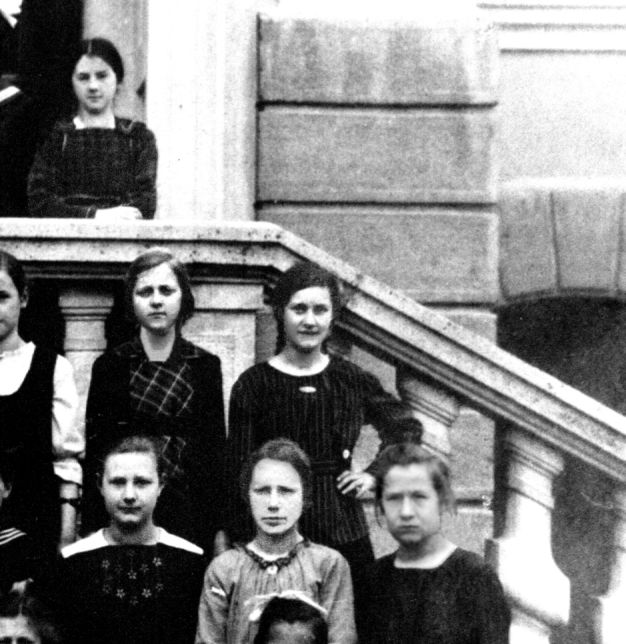 NÖRDLINGER,
Julius,
NÖRDLINGER,
Julius,
The Jewish
Community
of
La
Book Pages 391 - 392
KARL NEIDLINGER
Julius Nördlinger, born October 27, 1867 in Laupheim, deceased January 9, 1933, in Laupheim
Thekla, née Leiter, born March 29, 1879 in Oberdorf, deported April 26, 1942, to the Izbica Ghetto, Poland
- Isidor, born June 5, 1905
- Bertha, born January 24, 1907
- Leopold, born March 11, 1911

From the top: Alice Bernheim. In the middle, on the right: Bertha Nördlinger as a student of the Catholic Mädchenmittelschule in 1918 and next to her Steffi Rieger. On the bottom, left to right: restaurateur Senze, Emma Lämmle, Luise Mann. The students of this school were between 11 and 14 years old.
(taken from: 100 Jahre Realschule, 1996)
Photo: In the Jewish home for the elderly: Thekla Nördlinger,
Helene Guggenheimer, Karl Guggenheimer, Arthur Grab (with glasses).
The
young visitor standing at the window is probably Edith Weil.